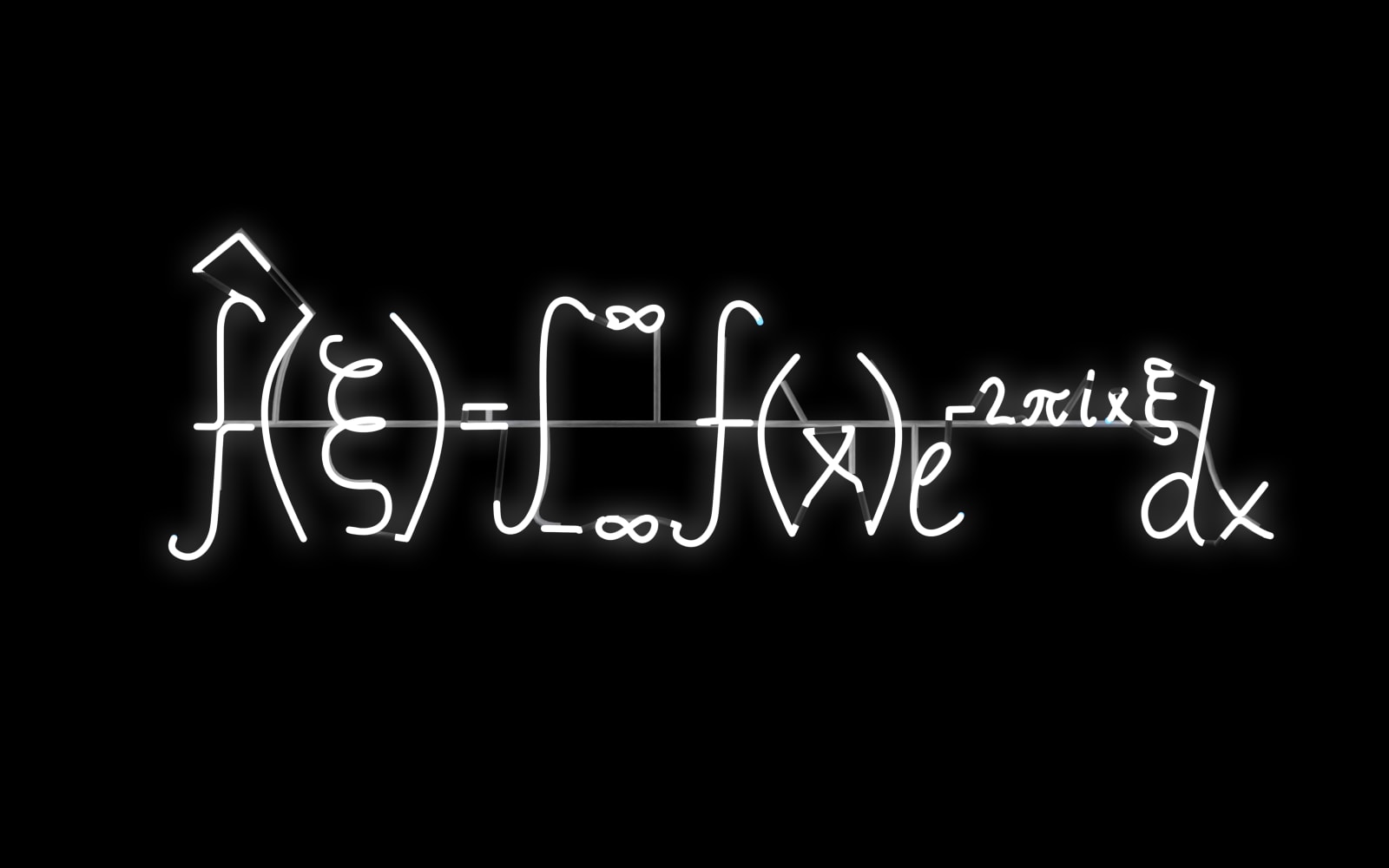Andrea Galvani Italy, b. 1973
Fourier Transform, 2018
6500K neon, white blown glass, metal structure
37.2 x 125 x 7 cm
Edition of 3
Populations across the Earth’s fault-lines have been long concerned with the destructive power of earthquakes. Since the beginning of time, methods and mythologies alike were devised to explain and predict...
Populations across the Earth’s fault-lines have been long concerned with the destructive power of earthquakes. Since the beginning of time, methods and mythologies alike were devised to explain and predict these catastrophic events. Among its many different applications, this equation can be used to analyze seismic waves, and helps architects and engineers design buildings that will survive earthquakes.
Joseph Fourier (1768-1830) was interested in the flow of heat, but the equation he developed eclipsed his original intention, revealing hidden depths even he was unaware of. In essence, it says that any complex wave-like signal that fluctuates through time and space can be deconstructed into a sum of regular sine waves, like ripples on the surface of water. The term on the left is called the transform, which reveals specific properties of the wave (phase and amplitude). Fourier transforms are performed by our ears all the time: sound waves are physical pressure waves that move through the air and create vibrations in our ears. They are untangled by mechanisms of the inner ear and converted into electrical signals that are sent to the brain. Our brains interpret these signals as sound. The Fourier transform can also be used to find the structure of large biological molecules like DNA, compress image data in digital photography, re-engineer old or damaged audio recordings, improve medical scanners, and much more.
Importantly, the Fourier transform reveals where the vibrations produced by a typical earthquake reach the greatest frequency. Buildings also have their own natural modes of vibration, and if these match the earthquake’s, the structure is likely to collapse. Architects and engineers can use information from the Fourier transform of local earthquakes to study their oscillation patterns, and employ computer models to propose designs that will respond to the shaking ground with different vibrational frequencies, increasing the likelihood that the architecture will stay standing.
Joseph Fourier (1768-1830) was interested in the flow of heat, but the equation he developed eclipsed his original intention, revealing hidden depths even he was unaware of. In essence, it says that any complex wave-like signal that fluctuates through time and space can be deconstructed into a sum of regular sine waves, like ripples on the surface of water. The term on the left is called the transform, which reveals specific properties of the wave (phase and amplitude). Fourier transforms are performed by our ears all the time: sound waves are physical pressure waves that move through the air and create vibrations in our ears. They are untangled by mechanisms of the inner ear and converted into electrical signals that are sent to the brain. Our brains interpret these signals as sound. The Fourier transform can also be used to find the structure of large biological molecules like DNA, compress image data in digital photography, re-engineer old or damaged audio recordings, improve medical scanners, and much more.
Importantly, the Fourier transform reveals where the vibrations produced by a typical earthquake reach the greatest frequency. Buildings also have their own natural modes of vibration, and if these match the earthquake’s, the structure is likely to collapse. Architects and engineers can use information from the Fourier transform of local earthquakes to study their oscillation patterns, and employ computer models to propose designs that will respond to the shaking ground with different vibrational frequencies, increasing the likelihood that the architecture will stay standing.
Exhibitions
Buenos Aires, Revolver Galeria, Instruments for Inquiring into the Wind and the Shaking Earth, 8 September - 15 November 2018Madrid, ARCOmadrid, Instruments for Inquiring into the Wind and the Shaking Earth, 27 February - 3 March 2019
Join our mailing list
* denotes required fields
We will process the personal data you have supplied in accordance with our privacy policy (available on request). You can unsubscribe or change your preferences at any time by clicking the link in our emails.
